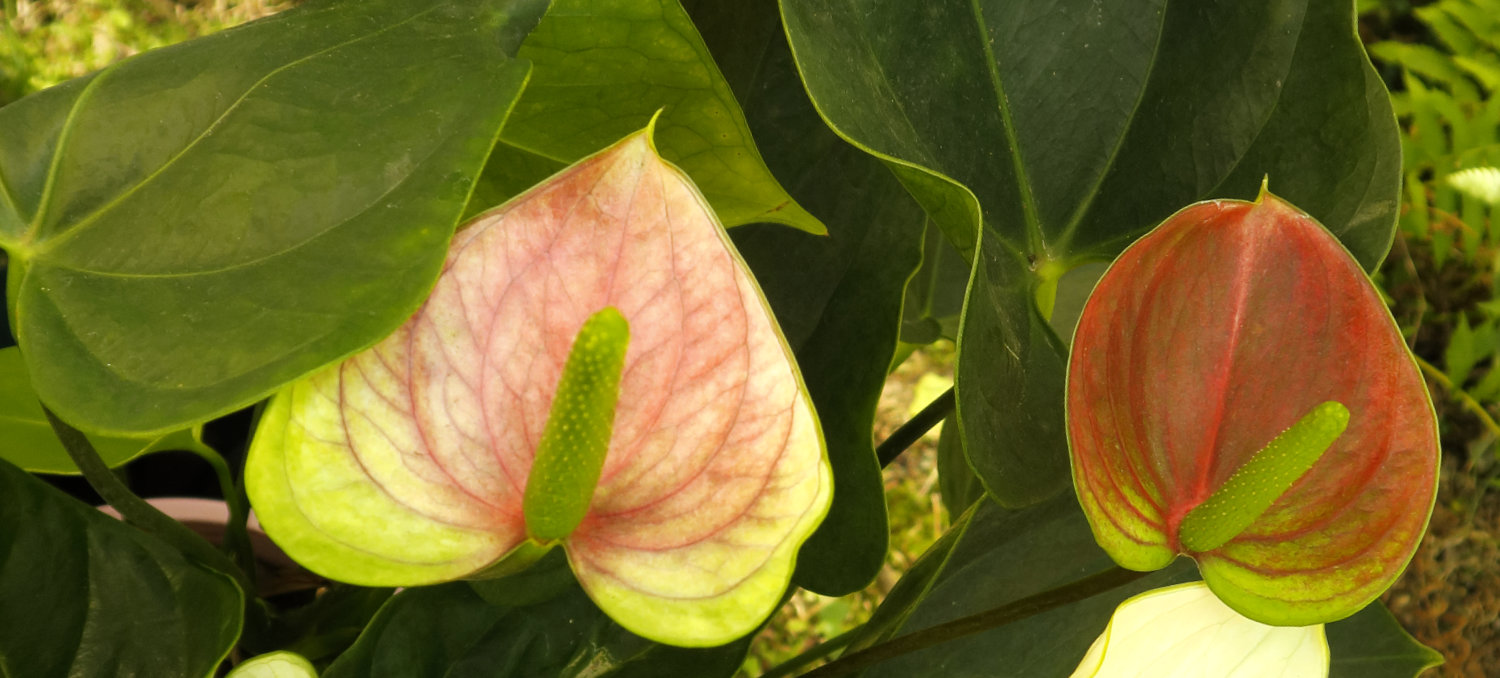Araceae
The Arum family.
Morphologically there are 2 types of plants in 8 subfamilies.
-
- The thalloids are aquatic plants with 1 flower in a pouch or cavity in an undifferentiated body.
These are the Lemnoideae and, although they are very different in appearance DNA studies
have shown that they belong in the Araceae.
They are a minimised version of plants in the other families.
-
- The aroids have roots, stems and leaves plus inflorescences consisting of a spadix and spathe.
These are the subfamilies Aroideae, Monsteroideae, Gymnostachydoideae, Orontioideae, Pothoideae,
Lasioideae and Zamioculcadoideae.
The following notes apply only the aroids. (The Lemnoideae are discussed under Landoltia, the Duckweeds).
Family Araceae has 110 genera with 1800 species or 114/3750 depending on the classification.
The perennial plants are mostly herbs with some woody plants.
Stems on terrestrial plants can be rhizomatous or have swollen tubers, and aerial roots are commonly present.
Leaves, often large, are alternately arranged, sometimes in ranks, and usually on petioles.
The petioles can be long and usually have sheathed bases.
Some are subtended by modified leaves that protect the developing leaves.
There is a lot of variation in the leaves between species and even on one plant.
Leaves can be simple, pinnately or palmately lobed or with more complicated divisions.
Some have perforated leaves, others have different juvenile and adult leaves.
Variegated leaves occur in some.
Inflorescences are terminal or axillary, solitary or grouped.
The spadix is a fleshy cylindrical axis that is covered in tiny flowers.
It is partly or completely covered by a modified bract or spathe.
The spathe can be white, green or other colours, free or attached to the spadix.
It is variously shaped and can be persistent or deciduous.
The flowers, without stalks, can be bisexual or unisexual.
There can be sterile flowers at the top or bottom of a bisexual spadix or between male and female flowers.
With unisexual flowers both male and female flowers are on the same spadix with the males above the females.
Unisexual flowers usually have no perianth and bisexual ones have 0 to 6 small tepals.
A typical bisexual flower has 4 or 6 (1 to 22) short stamens around the ovary.
The superior ovary usually has 3 (to 15) fused carpels, 1 (3 or more) locule with one to many ovules.
The stigma may be on a short, or no, style.
Flowers often emit a foul smell to attract pollinators.
Each fruit is usually fleshy like a berry, with 1 to many seeds, and can be white, green, red or yellow.
J.F.


